Cantilever Racking
Cantilever racking systems are ideal for storing long, bulky materials like timber, pipes, steel bars, or plasterboard. With open fronts and sturdy arms, they offer easy access and excellent load capacity. Available in single or double-sided racking systems, our heavy-duty cantilever racks are perfect for builders' yards, warehouses, and industrial sites. Designed for stability and space-saving, they can be scaled to suit your storage needs.
The Benefits of Cantilever Racking Systems
Cantilever Racking, sometimes called bar racks or cantilever arm racks, are ideal for storing medium to very large items horizontally that often vary in width. They can store steel bars, aluminium angles, pipes, timber, or even pallets of plasterboard.
As the uprights are an L shape with fixed or adjustable cantilever arms, they are designed to provide clear entry. This leaves the front totally open to accept long loads, such as beams or pipes.
The closer the racking uprights, the higher the arm load capacity will be. Robust by design, our range of heavy-duty cantilever racks are suitable for the storage of very heavy items.
Our cantilever shelving is suitable for a range of industrial applications from single racks to large runs up to 10 metres high. To ensure the racking is stable, floor fixing is highly recommended.
Increase Storage Space with Cantilever Racking
Our cantilever racking systems are well designed to make good use of space and to store long and heavy items in a safe and accessible way. Depending on the arm's length, they are capable of holding a large amount of stock in a relatively small area.
Our range of cantilever pallet racking includes both single and double-sided cantilever racks, with double-sided offering twice as much storage for a smaller increase in footprint.
These cantilever racks are often found in builders' yards, where they hold the long struts of wood often needed for large-scale building work. In addition, they are also common where there is a need to store long lengths of piping or drainage tubing.
How Cantilever Racking Works
The secret to how cantilever shelving works is in the distribution of weight. With the large feet at the bottom secured to the floor, this means that loads placed on them will not overbalance the bays.
The key feature of cantilever racking such as these, are the absence of any horizontal shelving. Loads are supported by spanning the gap between arms. This is why they are only suitable for long items that do not require continuous support along their length.
Once your run of racking is in place, extra arms can be purchased in order to increase the storage capacity. However, also note that there will be an upper limit to what weight the bay can hold, so always be aware of the total bay load.
How to Load and Install Cantilever Racking Correctly
When loading cantilever racking, always start with the heaviest stock at the bottom, working up to lighter items on the upper levels. This makes it easier and safer to load and unload.
The freestanding fixed arm bar racks are units designed to be accessible from both sides. Resembling a Christmas tree, they have arms on both sides which get shorter as the levels increase. This is designed so that lower levels hold more mass than the upper ones. Racking like this should always be securely fastened to the floor.
Standard single sided cantilever shelving is designed to be placed against a wall and often should also be wall-fixed in order to give maximum stability.
Like most pallet racking, the majority of these products are available as both starter bays or extension bays. Starter bays are self-contained with two uprights, whereas an extension bay will need to be attached to an existing bay in order to stand up.





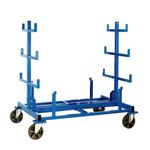
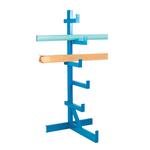
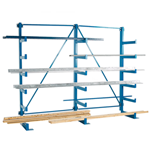
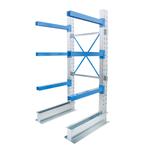
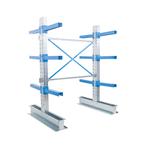
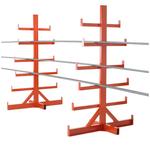
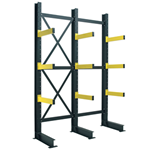
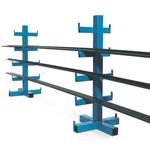
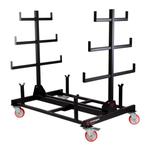
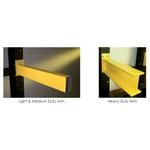
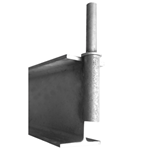
 Why Racking Inspections are Particularly Important
Why Racking Inspections are Particularly Important Cantilever Racking Creates Storage for Aircraft Components
Cantilever Racking Creates Storage for Aircraft Components